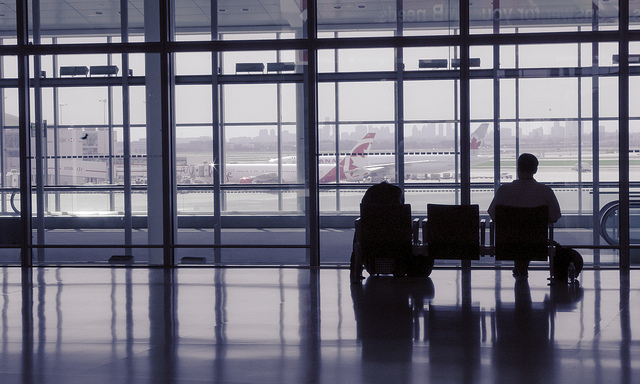On April 1, 2015, new federal government rules will set the stage for the largest set of deportations in Canada’s history. A new immigration policy targeting low-waged migrant workers in the Temporary Foreign Workers Program (TFWP) and the Live-In Caregiver Program (LCP) takes effect.
This policy has been dubbed the “four and four” or “4 & 4” rule because the legislation introduced on April 1, 2012 states that migrant workers who have been employed in Canada for four years or more must leave the country, and that these workers will be barred from working in Canada for another four years, after which they can reapply for a work permit.
According to the Citizenship and Immigration website, reapplying is contingent on meeting the eligibility requirements of spending four consecutive years either outside of Canada or in Canada as a visitor or student (but not working).
Previously, temporary foreign workers (TFW) could reapply to continue working for their employer.
Most of the workers that will be forced to leave are employed in the agricultural and fishing industries.
The temporary foreign worker program (TFWP) allows employers to hire foreign workers on a temporary basis to overcome skills and labour shortages. This can only be done when the shortage cannot be filled by Canadian citizens and permanent residents. To do so, employers need to satisfy a Labour Market Impact Assessment (LIMA) to verify that there is a need for a foreign worker and that no Canadians can do this job.
In June, 2014, the Conservative government introduced new rules to limit the number of foreign workers that large- and medium-sized companies could hire in order to ensure that Canadians are first in line for jobs. These changes were made in response to reports that showed that some Canadian companies, like RBC and local McDonalds chains, had plans to replace some Canadian employees with foreign workers at a reduced wage.
Under the new rules, employers would be barred from hiring low-wage TFWs in regions where the unemployment rate is above six per cent. The rules also cap the number of foreign workers who can be hired to ten per cent by 2016.
According to tweets made by Employment Minister Jason Kenney at the time, the changes were made to tackle studies that showed how “over-reliance on low-skilled TFWs in certain sectors & regions have caused discrete labour market distortions.”
However, a recent report by the parliamentary budget office (PBO) found that there was very little evidence to prove that non-Canadian employees were taking away jobs from residents. The study reported that the number of foreign workers in Canada tripled between 2002 and 2012, rising from 101,098 to 338,221. Despite the increase, the total number of foreign workers in 2012 made up just 1.8 per cent of the country’s workforce
The study also found that a large number of the foreign workers work in low-paying positions on farms, restaurants or as babysitters or nannies. The report attributed this to the unwillingness of employers to raise wages in these areas. They chose instead to rely on unemployed, low-skilled domestic workers or foreign workers.
A petition started by the Migrant Workers Alliance (MWA) has been circulating on this issue for three weeks. It urges the federal government to end the 4 & 4 rule and allow present and future migrant workers to be granted permanent residency and access to social benefits and entitlements. As of March 16, the petition had 2,680 supporters with a goal of 5,000 signatures.
A statement on the MWA website says that foreign workers “face tremendous physical barriers that position them as second class citizens to the Canadian state in terms of their rights and benefits.”
MWA has been organising protests against this mass deportation and the regulation changes, which they estimate will have negative effects on more than 62,000 workers currently in Canada.
The groups that make up the MWA are seeking a moratorium on the regulations so that workers can continue to work and gain their permanent residency.
According to a Jan. 27, 2015 letter to Conservative MPs from Kenney, the CIC is providing a one-year bridging work permit to 1000 TFWs who are subject to the 4 & 4 rule, to provide some relief to TFWs who have applied for immigration status.
However, this reprieve only applies to workers who applied in the Alberta Immigrant Nominee Program by July 1, 2014 and who hold work permits that expire in 2015.
The new rules of the Express Entry program mean that it is unlikely that many of these workers will meet the criteria for permanent residency. According to CBC reports, there are 10,000 people on the residency waiting list.
On their website, the Campaign Against the 4 Year Limit on Migrant Workers said, “Working in Canada for four years proves that the workers are needed, and that their work is permanent … This 4 and 4 rule entrenched a revolving door immigration policy, employers can simply replace current with new workers.”
A “Cross Canada Day of Action” has been organised by the MWA to protest the 4 & 4 rule on March 29 at 2 p.m. For more information, click here.
Fatima Syed is a Master of Journalism Student at Ryerson University. You can follow her at @fatimasyed401
Photo: flickr/ Saku Takakusaki



